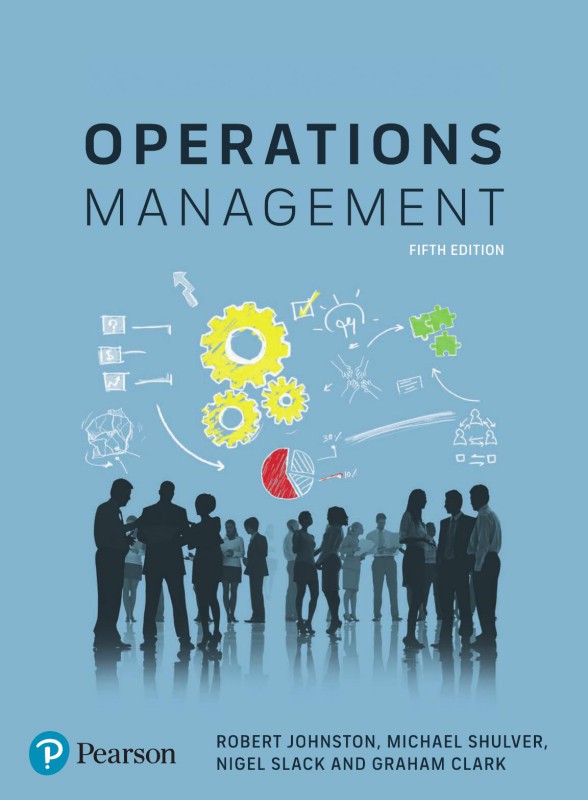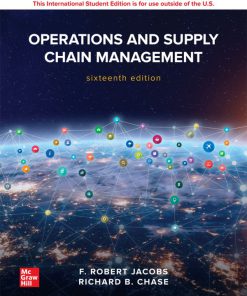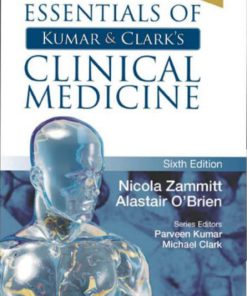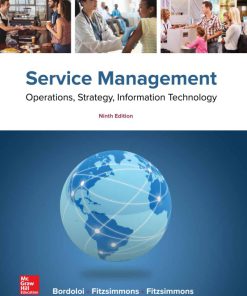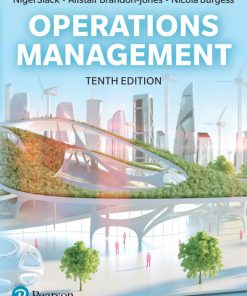Service Operations Management 5th Edition by Robert Johnston, Michael Shulver, Nigel Slack, Graham Clark 1292064463 9781292064468
$50.00 Original price was: $50.00.$25.00Current price is: $25.00.
Authors:Johnston, Robert; Shulver, Michael; Slack, Nigel , Series:Management [825] , Author sort:Johnston, Robert; Shulver, Michael; Slack, Nigel , Languages:Languages:eng , Published:Published:Sep 2020 , Publisher:Pearson
Service Operations Management 5th Edition by Robert Johnston, Michael Shulver, Nigel Slack, Graham Clark – Ebook PDF Instant Download/Delivery. 1292064463, 9781292064468
Full download Service Operations Management 5th Edition after payment
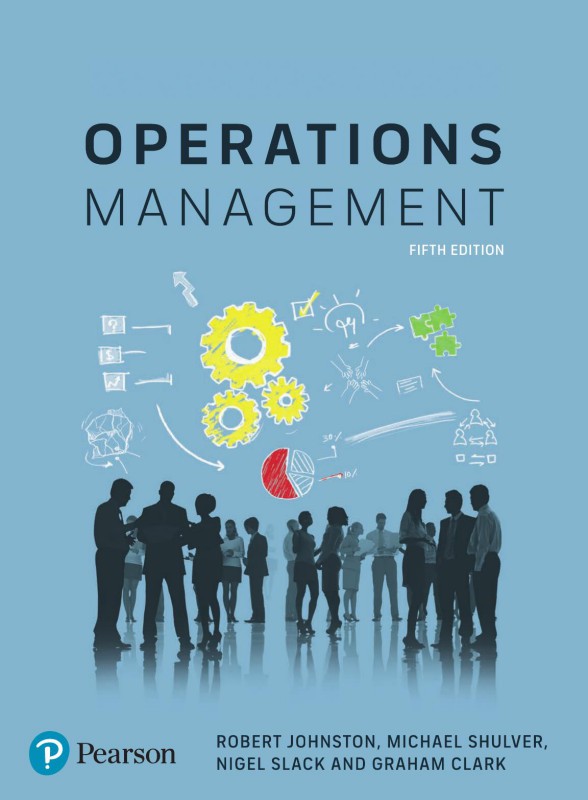
Product details:
ISBN 10: 1292064463
ISBN 13: 9781292064468
Author: Robert Johnston, Michael Shulver, Nigel Slack, Graham Clark
Analyse and address organisational challenges using real world examples Service Operations Management, 5th Edition, by Robert Johnston et al. is a market-leading text on service operations management and provides a clear understanding of how service performance can be improved in organisations. This textbook applies underlying theories to the real world challenges faced by service operations managers on a daily basis, by providing a diverse range of examples and illustrations. Each chapter provides a range of tools, frameworks and techniques designed to help you better analyse existing operations and understand ways to deal with operational challenges. Pearson, the world’s learning company.
Service Operations Management 5th Table of contents:
Part I Framing service operations
1 Introduction to service operations
Learning objectives
1.1 What is ‘service’?
1.2 What is service operations management?
1.3 What are service operations managers responsible for?
1.4 Why is service operations management important?
1.5 Challenges for service operations management
1.6 Summary
Discussion questions and exercises
Case exercise: European Airlines Group
Further reading
Notes
2 The world of service
Learning objectives
2.1 Services are everywhere
2.2 Services are what we do and consume
2.3 Services are the way of the future
2.4 Summary
Discussion questions and exercises
Case exercise: Servitisation at Sterksteen
Further reading
Notes
3 Service strategy
Learning objectives
3.1 What is service strategy?
3.2 Why is it important to have a service strategy?
3.3 The process of service strategy formulation
3.4 How can service provide a competitive advantage?
3.5 How can service performance objectives be converted into operations priorities?
3.6 How can a strategy be sustained?
3.7 Summary
Discussion questions and exercises
Case exercise: Corks Nightclub – an overnight success?
Further reading
Notes
4 The service concept
Learning objectives
4.1 What is a service concept?
4.2 What is the structure of a service concept?
4.3 How can managers use the service concept?
4.4 Summary
Discussion questions and exercises
Case exercise: Trialing new concepts at Capes & Latimer
Further reading
Notes
Part II Service people
5 Customer relationships
Learning objectives
5.1 Customers – who are they?
5.2 What are the benefits of retaining good customers?
5.3 How can managers develop good customer relationships (B2C services)?
5.4 How can managers develop good business relationships (B2B services)?
5.5 Summary
Discussion questions and exercises
Case exercise: P-Mecxx Cyber Services (P-Mecxx)
Further reading
Notes
6 Service quality
Learning objectives
6.1 What is customer satisfaction?
6.2 What influences expectations and perceptions?
6.3 How can expectations and perceptions be ‘managed’?
6.4 How can service quality be operationalised?
6.5 How can managers discover customers’ expectations?
6.6 How can a service be specified?
6.7 Summary
Discussion questions and exercises
Case exercise: The Northern Breast Screening Unit
Further reading
Notes
7 Designing customer experience
Learning objectives
7.1 What is ‘customer experience’?
7.2 Servicescapes – their effect on the customer experience
7.3 Designing the customer journey
7.4 Managing the total chain of processes
7.5 What is the role of technology in shaping the customer experience?
7.6 Summary
Discussion questions and exercises
Case exercise: Elena’s customer experience
Further reading
Notes
8 People in the service operation
Learning objectives
8.1 Why is service delivery a pressurised task?
8.2 How can organisations manage service staff?
8.3 What is an appropriate level of employee discretion?
8.4 How can customers be ‘managed’?
8.5 Summary
Discussion questions and exercises
Case exercise: Superstore plc
Further reading
Notes
9 Service culture
Learning objectives
9.1 What is organisational culture?
9.2 What is service culture?
9.3 Culture frameworks, typologies and taxonomies
9.4 How do national cultures vary?
9.5 Can culture be managed?
9.6 Summary
Discussion questions and exercises
Case exercise: Modularity, AI and culture change at Dexan Consulting
Further reading
Notes
Part III Delivering service
10 Service supply networks
Learning objectives
10.1 How can service supply networks be described?
10.2 How can supply networks be configured?
10.3 Managing supply networks on an ongoing basis
10.4 Summary
Discussion questions and exercises
Case exercise: Holmart and Wersa – the food waste partnership
Further reading
Notes
11 Designing the service process
Learning objectives
11.1 What is service process design?
11.2 What are the main types of service process?
11.3 How can managers ‘engineer’ service processes?
11.4 Repositioning service processes
11.5 Technology in service process design
11.6 Summary
Discussion questions and exercises
Case exercise: The GDP Central Estimation Service
Further reading
Notes
12 Managing service performance
Learning objectives
12.1 What is ‘performance management’?
12.2 Setting the vision, mission and strategic objectives
12.3 What is ‘performance’ in service operations?
12.4 Performance measurement
12.5 Performance reporting
12.6 Setting performance targets
12.7 Achieving consistency
12.8 Performance and control
12.9 Summary
Discussion questions and exercises
Case exercise: Chilli Airways
Further reading
Notes
13 Service resources and capacity
Learning objectives
13.1 What is resource and capacity management?
13.2 Long-term resource and capacity management
13.3 Medium-term resource and capacity management
13.4 Short-term resource and capacity management
13.5 How do services manage bottlenecks and queues?
13.6 What happens when managers can’t cope with demand?
13.7 How can organisations improve their capacity utilisation?
13.8 Summary
Discussion questions and exercises
Case exercise: Treegrove Holiday Village
Further reading
Notes
Part IV Improving service operations
14 Service innovation
Learning objectives
14.1 What is innovation?
14.2 What is different about service innovation?
14.3 What is the process of service innovation?
14.4 What resources are necessary for service innovation?
14.5 Summary
Discussion questions and exercises
Case exercise: Developing the County Workhouse
Further reading
Notes
15 Service improvement
Learning objectives
15.1 How can ‘value’ drive improvement?
15.2 Should improvement aim to be better or different? Incremental or radical?
15.3 How is improving service operations different?
15.4 What are the main approaches to improvement?
15.5 How can managers sustain continuous improvement?
15.6 Summary
Discussion questions and exercises
Case exercise: Fermat Numérique
Further reading
Notes
16 Learning from problems
Learning objectives
16.1 Why do problems occur?
16.2 How can complaining customers be dealt with?
16.3 How can managers use problems to drive improvement?
16.4 How can managers prevent problems occurring?
16.5 Summary
Discussion questions and exercises
Case exercise: ‘One-Stop’ Protection Service
Further reading
Notes
17 Learning from other operations
Learning objectives
17.1 What is benchmarking?
17.2 What are the different types of benchmarking?
17.3 How do organisations go about benchmarking?
17.4 How can quality awards and general benchmarking studies help?
17.5 Summary
Discussion questions and exercises
Case exercise: Mumbai Private BankFurther reading
Notes
People also search for Service Operations Management 5th:
5-1 operations with polynomials answers
service operations management assignment
service operations annex
service operations management 2
You may also like…
eBook DJVU
Computer Simulation in Management Science 5th Edition by Michael Pidd ISBN 0470092300 9780470092309

